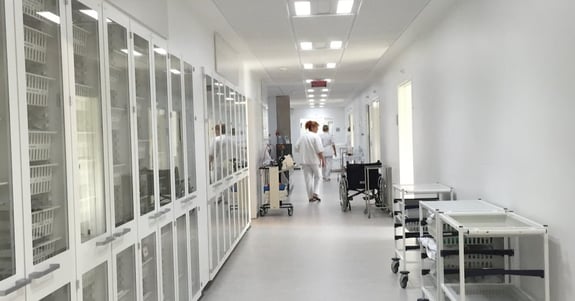In 2014, Holbæk Hospital underwent a major renovation of its general intensive care unit, where patients with multi-organ failure are treated and stabilized before being transferred to the wards. When it came time to decide on the lighting, the choice fell on Chromaviso Circadian Lighting - an automatically controlled light system that supports the natural circadian rhythm of both patients and staff.
Outcome: Noticeable impact from day one
Both patients and staff have experienced the impact of the new lighting.
— From the very first day, we have been extremely pleased with our new lights. It creates a comfortable atmosphere and everything becomes clearer because of the increased brightness, explains Susanne Larsen, head nurse. She also adds that she wishes she had circadian lighting in her office as well.
— As I work in all three shifts on the department, I experience the lighting throughout the day. I find it very pleasant and I use it on all my shifts. I have felt better since we got the new, powerful lights, explains Tina Mølgaard, nurse. She also mentions that the staff has become more aware of speaking softly when the lights are dimmed in the evening and during the night.
Light on all day
Patients thrive in the circadian lighting, which ensures a consistent rhythm and sense of time, crucial for maintaining a healthy circadian alignment. As a result, the staff no longer turns off the lights when patients take their midday nap.

The body's production of the sleep hormone melatonin is strongly influenced by light. When it is dark, melatonin is released, and by having darkness during the day, the body has less melatonin at night, where the hormone is essential for a good night's sleep.
Night light with customized settings
The light is strongest in the middle of the day, and at night, a specially developed night light is turned on in the corridors, while the rooms are dark but with the option of several lighting settings as needed.
— Previously, we dimmed the regular lights, but the new night light is more comfortable. In fact, we always look forward to the night light being turned on in the corridors, explains Tina Mølgaard. The night light is designed to ensure optimal visibility for the staff while not disrupting the body's circadian rhythm.
Nurse Vivi Petersen often works the night shift and she experiences several benefits of the night light and the different settings she can activate during the night, whereas before, she had to use bright light throughout the entire room.
— I use the lighting setting we call 'night wall' a lot. I can do my work without turning on full brightness. Additionally, it's good for patients who don't like to sleep in darkness. It's comfortable for them, and it doesn't disrupt their circadian rhythm, she explains.
Vivi Petersen also uses the emergency light, both day and night:
— In emergency situations, we need to be able to see what we're doing. And the emergency light is much better than the regular lighting for that purpose. It's easy to operate and always responds with the first press.
With the emergency light, all the lights in the room are turned on in a powerful white illumination so that the staff can act and see everything around the patient.
About the solution at Holbæk Hospital
- 12 rooms, a monitoring area, and a hallway have circadian lighting.
- The department receives nearly 800 patients annually.
- Touch screens in all rooms - change the lighting with a click.
- Utilizing the latest technologies in LED with energy-efficient light sources.
The various lighting settings at the Holbæk intensive care unit
The lighting is operated via a touch screen. There are eight different basic settings - just a touch away.
- Circadian Rhythm: The light rises in the morning, is brightest in the middle of the day, and in the evening, a specially developed night light is turned on.
- Night Light: A warm light for the night that does not disrupt the body's circadian rhythm.
- White Night: A white light that can be turned on at night.
- Relatives: A warm light for conversation or a difficult situation.
- Emergency: A powerful white light that ensures optimal visibility.
- Night Wall: A wall light that can be used for patients who want some light at night.
- Dimmed Light: A dimmed white light for patients who are sensitive to light.
The lights can also be turned off.

